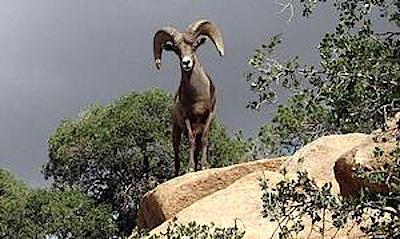
Joshua Tree National Park officials are starting a study on whether to add 32,000 acres to the park/NPS
More than 30,000 acres near Joshua Tree National Park in California that once were eyed for a landfill are being considered for addition to the national park.
Park officials are embarking on a boundary study to explore whether it would be appropriate and feasible to add 32,000 acres in the Eagle Mountain area in Riverside County to Joshua Tree. The park was established to preserve and protect the scenic, natural, and cultural resources representative of the Colorado and Mojave deserts’ rich biological and geological diversity, cultural history, wilderness, recreational values, and outstanding opportunities for education and scientific study.
Bounded to the south, west, and north by Joshua Tree National Park, the eastern border of the study area is defined by the Colorado River Aqueduct, which roughly formed the original Joshua Tree National Monument boundary established in 1936. Originally part of Joshua Tree National Monument when designated in 1936, the study area was later removed for mineral extraction activities in 1950.
Major mining activities in the study area ceased in 1983. In 1989, the area was proposed for a landfill. After decades of challenges and litigation, the landfill proposal was withdrawn in 2013. The Eagle Mountain area remains a key building block for landscape-scale conservation in the California desert. However, lands within the area and surrounding region continue to be open to various development proposals that could affect protection of the fragile desert ecosystems.
Inclusion of the study area in the national park boundary could help to achieve landscape-scale conservation objectives for the California desert region. Recent studies have documented the particular importance of the area for the migration of bighorn sheep populations. In addition, the study area: 1) contains prehistoric and historic resources that expand on cultural themes interpreted at the national park; 2) may offer new opportunities for public enjoyment; and 3) contains areas important for maintaining wilderness values within Joshua Tree National Park.
The NPS will work in partnership with agencies, organizations, and tribes active within the area, including communities and jurisdictions adjacent to the study area.
The initial comment period for the scoping phase of the study has started, and will extend through August 21. The Park Service has published a newsletter on its public planning website that provides an overview of the study process and some preliminary findings and options under consideration. The NPS is also hosting several public meetings to explain the study process, answer questions, gather information, and listen to public ideas and concerns.
Public hearings on the study will be held:
* July 29, 1:30 p.m. - 3 p.m., Online Meeting, See study website for information on how to connect and participate
* August 4, 6 p.m.-8 p.m., Lake Tamarisk Community Center, 26- 251 Parkview Drive, Desert Center, CA 92239
* August 5, 6 p.m.-8 p.m., Joshua Tree Community Center, 6171 Sunburst Street, Joshua Tree, CA 92252-2147
* August 6, 6 p.m.-8 p.m., University of California, Riverside - Palm Desert Center, 75080 Frank Sinatra Drive, Palm Desert, CA 92211-5202
The study is not expected to be completed until mid-2016.



Add comment